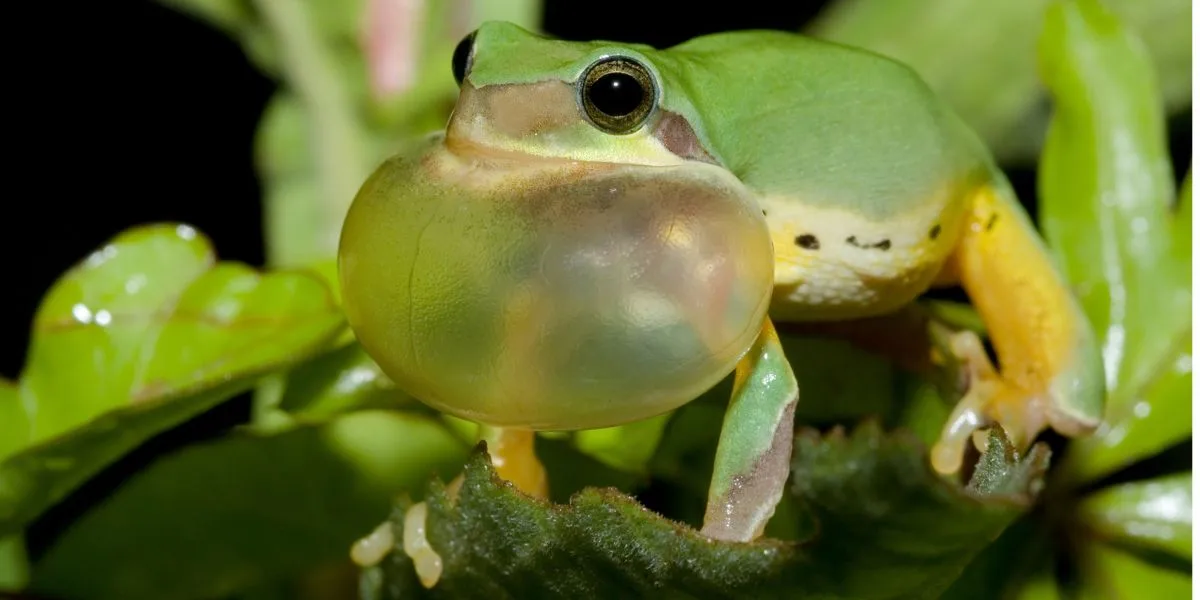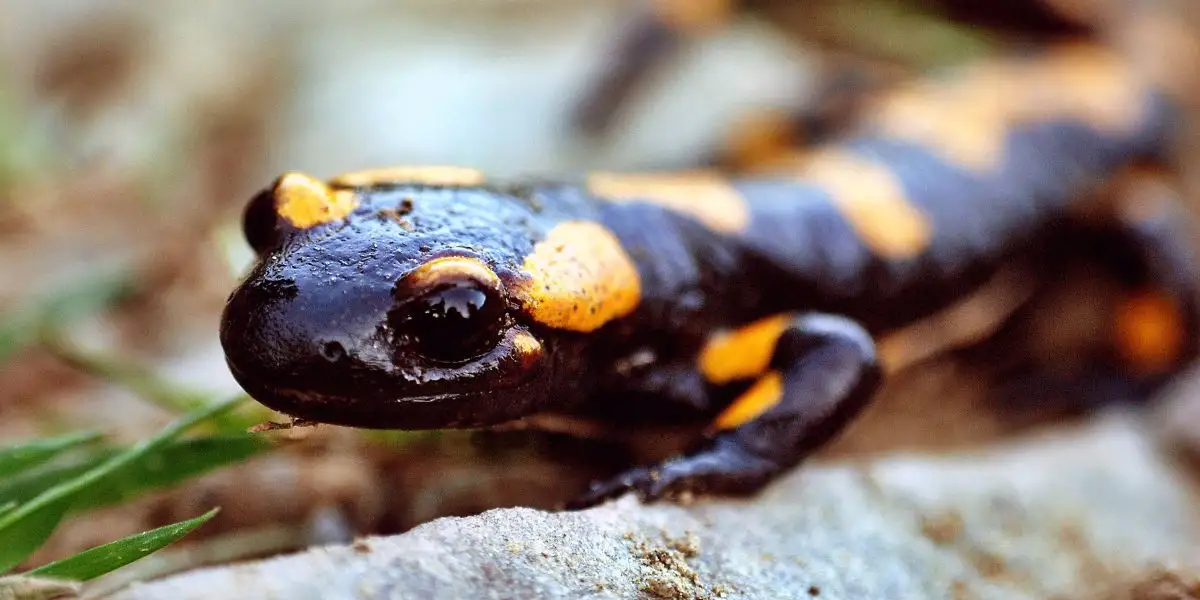Amphibians are often overlooked as potential companions. However, these fascinating creatures can make great pets for beginners who are looking for something unique and low-maintenance. If you’re considering getting an amphibian as a pet, it’s important to choose a species that is beginner-friendly and easy to care for.
Beginner-Friendly Amphibians
| Amphibian Species | Temperament | Care Requirements | Size |
|---|---|---|---|
| African Clawed Frog | Docile | Relatively easy | Medium |
| Fire-Bellied Toad | Semi-Aggressive (against smaller animals/same enclosure) | Relatively simple | Small |
| White’s Tree Frog | Docile | Relatively simple | Small to medium |
| Red-Eyed Tree Frog | Docile | Relatively easy | Small |
| Axolotl | Docile | Low maintenance | Large |
Please note that the simplicity rating and size rating are subjective and based on the information provided. These ratings are meant to provide a general guideline for beginners, but individual experiences and perspectives may vary. Always conduct further research and consult reliable sources to ensure you can meet the specific care requirements of the amphibian you choose as a pet.
Factors to Consider When Choosing a Pet Amphibian
- Assess your level of experience and commitment.
- Consider the space available for your amphibian’s enclosure.
- Determine your budget for their care and maintenance.
What to Consider When Choosing a Pet Amphibian
When choosing a pet amphibian, there are a few factors to consider. You’ll want to think about the level of care and maintenance required, as some species may require more attention than others.

Size: Consider the size of the amphibian species you are interested in. Some species, like the Red-Eyes Tree Frog, are relatively small and can be easily housed in a small enclosure. Others, like the Axolotl, can grow quite large and will require a larger tank or aquarium.
Docile Temperament: Beginner-friendly amphibians should have a calm and docile temperament. They should be easy to handle and not prone to aggression or biting. This is especially important for those who are new to handling amphibians and may be nervous or inexperienced.
Care Requirements: Each amphibian species has specific care requirements that need to be met in order for them to thrive. Consider factors such as temperature, humidity, diet, and habitat setup when choosing a pet amphibian. Some species, like the Fire-Bellied Toad, have relatively simple care requirements, while others, like the Axolotl, may require more specialized care.
Handling: Consider your comfort level with handling amphibians. Some species are more tolerant of handling and can be easily held and interacted with. Others are more delicate and may not tolerate handling as well. It’s important to choose a species that matches your comfort level with handling.
Lifespan: Different amphibian species have varying lifespans. Some species, like the Fire-Belllied Toad, can live for 10-15 years, while others, like the African Clawed Frog, have a shorter lifespan of between 5-10 years. Consider the commitment you are willing to make in terms of the lifespan of the amphibian you choose.
It is important to research and gather information about the specific care requirements of each species to ensure that they can provide the necessary environment and care for their new pet.
With the right choice of amphibian and proper care, beginners can enjoy the unique and fascinating world of amphibians as pets.
African Clawed Frog: Hardy Aquatic Frogs
African Clawed Frogs, not African Dwarf Frogs, are a popular choice for beginners looking to keep amphibians as pets. African Clawed Frogs are native to the rivers and streams of sub-Saharan Africa and are known for their peaceful nature and low maintenance requirements.
One of the main reasons why African Clawed Frogs are suitable for beginners is their hardiness and ease of care. They are relatively large amphibians, typically growing up to 5 inches in length. Despite their size, they are still easy to handle and care for. They require a simple aquatic setup with clean, dechlorinated water and basic lighting. African Clawed Frogs are fully aquatic, spending their entire lives in the water, which means they don’t require a land area in their habitat.

Another advantage of African Clawed Frogs is their relatively simple diet. They are primarily carnivorous and feed on aquatic invertebrates such as worms, insects, and small fish. Their diet can be easily supplemented with commercially available aquatic invertebrate foods. It’s important to note that African Clawed Frogs have a voracious appetite and may eat tank mates that are smaller in size, so careful consideration should be given when selecting tank mates.
African Clawed Frogs are relatively low-maintenance pets. They don’t require specialized lighting or heating, and their tank filtration system should ensure clean water conditions. Regular water testing and maintenance are necessary to keep the water quality optimal for their well-being. They are also hardy and can tolerate a range of water parameters.
While African Clawed Frogs are peaceful and can be fascinating to observe, they are not recommended for those seeking frequent handling and interaction. They are best observed from outside the tank as they are primarily aquatic creatures and may become stressed if handled too frequently.
| Fact | Description |
|---|---|
| Name | African Clawed Frog |
| Scientific Name | Xenopus laevis |
| Native Habitat | Sub-Saharan Africa, primarily found in rivers, streams, and ponds |
| Unique Characteristics | – They have fully webbed feet, which aid in swimming and digging – They lack a tongue and use their front limbs to push food into their mouths |
| Breeding Behavior | African Clawed Frogs practice internal fertilization and lay eggs, making them oviparous amphibians |
| Importance in Research | They have been widely used in scientific research, particularly in genetics and developmental biology |
| Conservation Status | African Clawed Frogs are listed as Least Concern by the IUCN, indicating they are not endangered |
In conclusion, African Clawed Frogs are a great choice for beginners looking to keep amphibians as pets. Their hardiness, ease of care, and peaceful nature make them an ideal companion for those new to amphibian care. With proper care and attention, African Clawed Frogs can provide years of enjoyment and fascination for their owners.
Fire-Bellied Toad: Colorful Semi-Aquatic Amphibians
Fire-Bellied Toads are a popular choice among beginner amphibian enthusiasts due to their vibrant colors and relatively easy care requirements. These small toads are native to parts of Asia, including China, Korea, and Japan. They get their name from the bright red or orange markings on their bellies, which serve as a warning to predators.
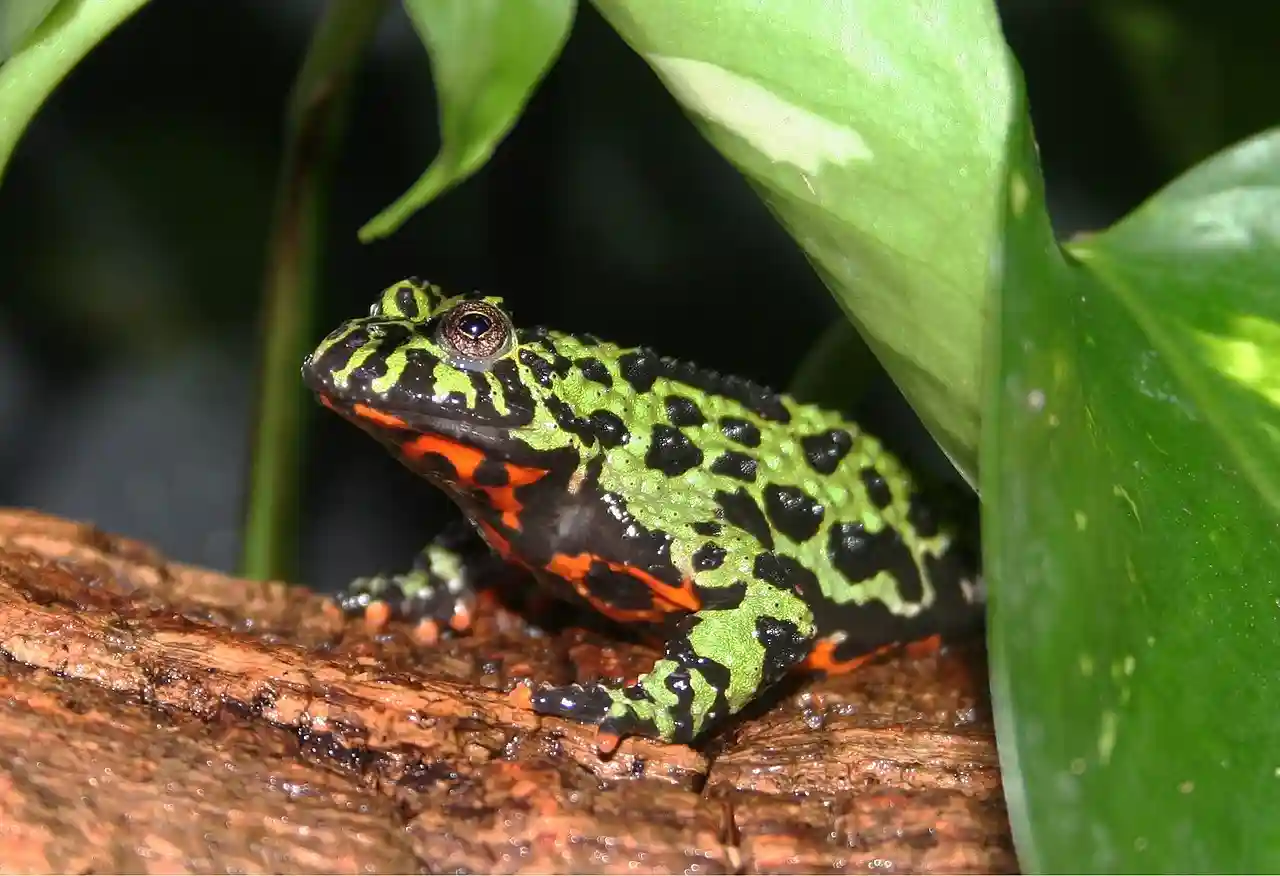
One of the reasons why Fire-Bellied Toads are great for beginners is their manageable size. They typically grow to be around 2 to 3 inches in length, making them easy to handle and care for. Additionally, they have a relatively long lifespan for an amphibian, with some individuals living up to 15 years in captivity.
Fire-Bellied Toads are semi-aquatic, meaning they require both land and water in their enclosure. A well-designed habitat for these toads should include a shallow water area for swimming and a dry land area for them to rest and explore. It’s important to maintain proper humidity levels in their enclosure to ensure their skin stays moist and healthy.
In terms of diet, Fire-Bellied Toads are insectivores, meaning they primarily eat insects. They have a voracious appetite and will readily consume a variety of small invertebrates, such as crickets, mealworms, and waxworms. It’s important to provide a varied diet to ensure they receive all the necessary nutrients.
Fire-Bellied Toads are generally peaceful and can be kept in small groups, although it’s important to monitor their behavior to ensure there is no aggression or bullying. They are also known for their interesting vocalizations, which include a series of high-pitched chirps and trills.
| Fact | Description |
|---|---|
| Name | Fire-Bellied Toad |
| Scientific Name | Bombina spp. |
| Native Habitat | Found in parts of Europe and Asia, primarily in wetlands, ponds, and marshes |
| Unique Characteristics | – They have vibrant red or orange markings on their bellies, serving as a warning to potential predators – When threatened, they arch their backs and display their brightly colored bellies |
| Skin Secretions | Fire-Bellied Toads secrete toxins through their skin, acting as a defense mechanism against predators |
| Breeding Behavior | They lay their eggs in water, and the males take care of the eggs and tadpoles until they hatch |
| Importance in Aquatic Trade | Fire-Bellied Toads are popular in the pet trade due to their striking appearance and active behavior |
Overall, Fire-Bellied Toads are a fantastic choice for beginners looking to venture into the world of amphibian keeping. With their striking appearance, manageable size, and relatively easy care requirements, they make for fascinating and rewarding pets. However, it’s important to do thorough research and ensure you are prepared to meet their specific needs before bringing one home.
Red-Eyed Tree Frog: Vibrant Tree Dwellers
Red-Eyed Tree Frogs, scientifically known as Agalychnis Callidryas, are captivating amphibians native to the rainforests of Central America. These vibrantly colored tree dwellers have become popular pets due to their stunning appearance and unique behaviors.
One of the most striking features of the Red-Eyed Tree Frog is its vibrant and vivid colors. Their bright green bodies provide excellent camouflage against the lush foliage during the day. However, when they open their large red eyes, it creates a mesmerizing contrast and makes them instantly recognizable. This eye-catching display serves as a defense mechanism to startle potential predators.
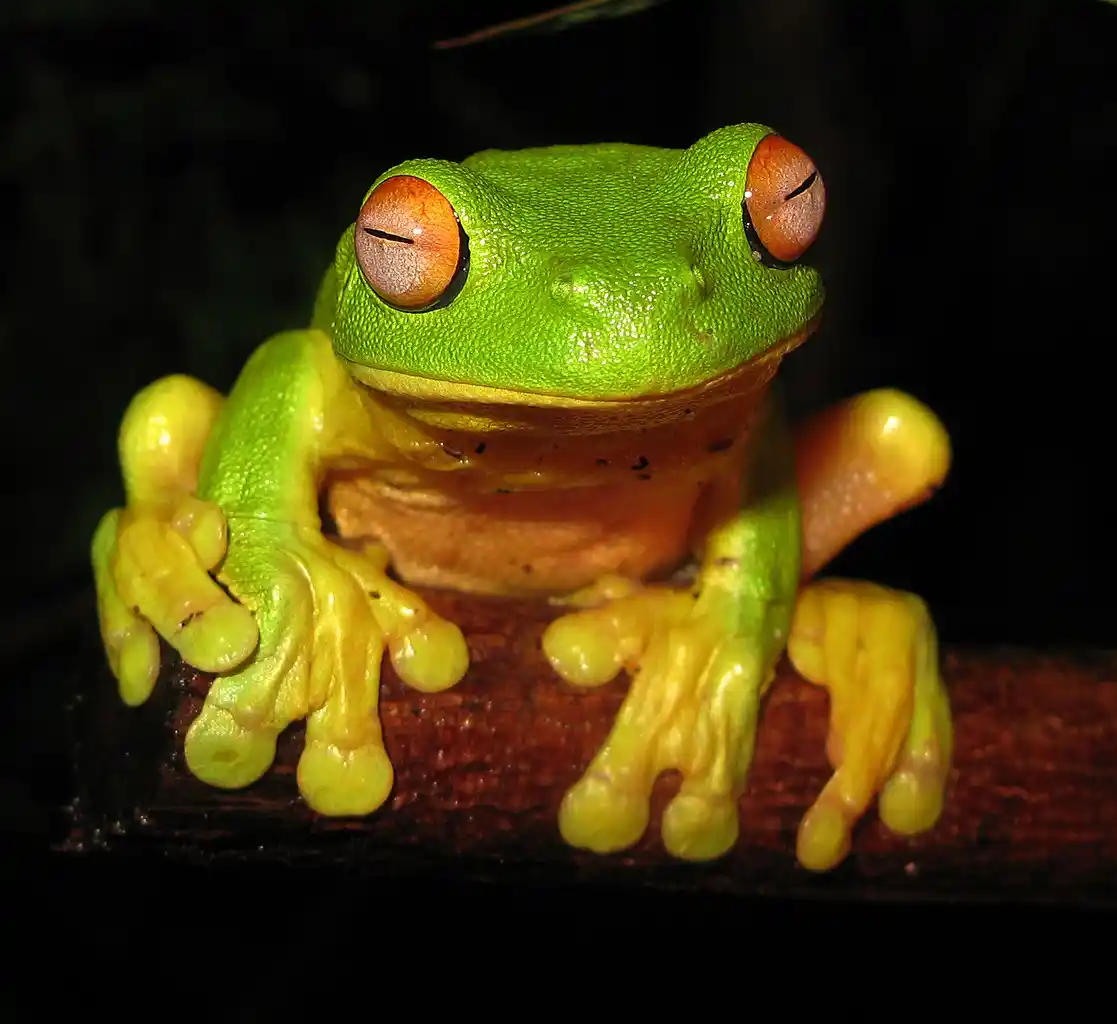
In addition to their visual appeal, Red-Eyed Tree Frogs are known for their arboreal lifestyle. They spend the majority of their time in trees, clinging to leaves and branches with their adhesive toe pads. This behavior allows them to stay safe from ground-dwelling predators and find a wide variety of prey, including insects and small invertebrates, to sustain their diet.
When it comes to caring for Red-Eyed Tree Frogs as pets, it is important to provide them with a suitable habitat that mimics their natural environment. A vertically oriented terrarium with plenty of foliage and branches for climbing and hiding is ideal. It is crucial to maintain moderate humidity levels by misting the enclosure regularly and ensuring proper ventilation.
Red-Eyed Tree Frogs thrive in a temperature range of 75 to 85 degrees Fahrenheit (24 to 29 degrees Celsius). The terrarium should be equipped with appropriate lighting to mimic natural day and night cycles. This includes providing a source of UVB light for optimal health.
Feeding Red-Eyed Tree Frogs is relatively straightforward. Their diet consists primarily of live insects, such as crickets, roaches, and flies. It is important to provide a varied diet and ensure that the prey is appropriately sized for the frog. Dusting insects with a calcium supplement is also recommended to meet their nutritional needs.
| Fact | Description |
|---|---|
| Name | Red-Eyed Tree Frog |
| Scientific Name | Agalychnis callidryas |
| Native Habitat | Found in the rainforests of Central America, primarily in countries such as Costa Rica and Panama |
| Unique Characteristics | – They have vibrant green bodies with bright red eyes, creating a striking appearance – Red-Eyed Tree Frogs have a suction-like toe pad structure that helps them climb and cling to trees |
| Defensive Behavior | When threatened, they can suddenly open their eyes and flash their bright red color to startle predators |
| Breeding Habits | Females lay their eggs on leaves above water, and once hatched, the tadpoles drop into the water below |
| Importance in Ecosystem | They play a vital role in maintaining the balance of insect populations in their rainforest habitats |
While Red-Eyed Tree Frogs are known for their docile nature, they are primarily observational pets and are not recommended for frequent handling. Excessive handling can cause stress and potentially harm their delicate skin.
In conclusion, Red-Eyed Tree Frogs are fascinating and visually stunning amphibians that can be enjoyed as pets by those willing to provide the proper care. Their vibrant colors, arboreal behavior, and unique characteristics make them a captivating addition to any amphibian enthusiast’s collection. With the right habitat, nutrition, and attention to their specific needs, Red-Eyed Tree Frogs can thrive and provide endless fascination for their owners.
White’s Tree Frog: Docile Tree Climbers
White’s Tree Frog, also known as the Dumpy Tree Frog, is a popular choice for beginners looking to keep amphibians as pets. These docile and hardy frogs are native to Australia, Indonesia, and Papua New Guinea. Known for their charming appearance and relatively simple care requirements, White’s Tree Frogs make delightful companions for amphibian enthusiasts.
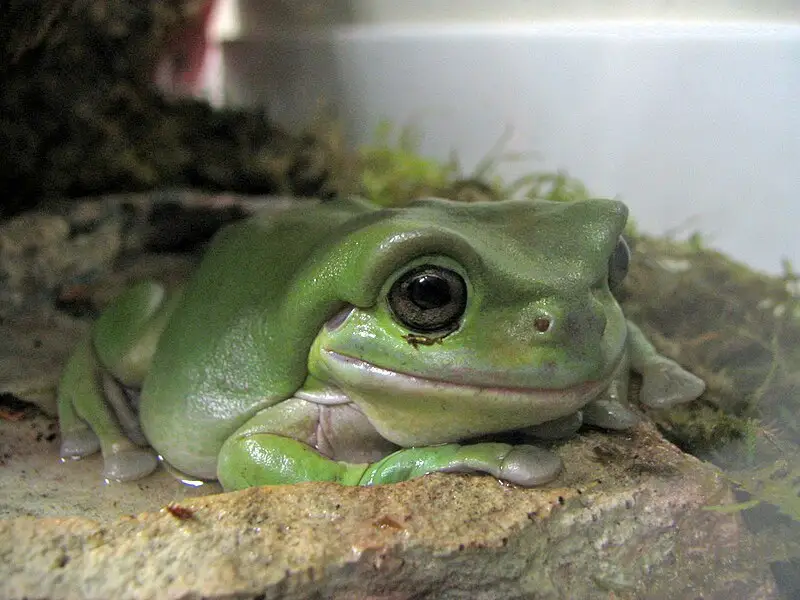
One of the appealing aspects of White’s Tree Frogs is their calm and docile temperament. They are generally easy to handle and have a tendency to remain relatively still when held. This makes them a great option for beginners who may be nervous about handling more active or jumpy amphibians.
White’s Tree Frogs have a medium size, typically ranging from 2.5 to 4 inches in length. Their size makes them manageable and easy to observe. They have a distinctive appearance, with a vibrant green body, round shape, and endearing eyes. Their unique appearance adds to their charm and makes them an attractive addition to any amphibian collection.
In terms of care requirements, White’s Tree Frogs are relatively simple to care for. They are a semi-aquatic species, meaning they require a habitat that provides both land and water areas. A terrarium with climbing opportunities, such as branches or plants, is ideal. The humidity levels should be moderate, and a shallow water dish should be provided for soaking and hydration.
White’s Tree Frogs are insectivorous and primarily feed on a diet of small invertebrates such as crickets, roaches, and mealworms. Their diet can be supplemented with dusted insects to ensure they receive proper nutrition.
Maintaining the appropriate temperature and humidity levels within their habitat is crucial for the well-being of White’s Tree Frogs. Regular monitoring of temperature and humidity, as well as providing a suitable lighting setup, is necessary to create a comfortable environment for them.
| Fact | Description |
|---|---|
| Name | White’s Tree Frog |
| Scientific Name | Litoria caerulea |
| Native Habitat | Found in Australia, Indonesia, and Papua New Guinea, primarily in forests, swamps, and wetlands |
| Unique Characteristics | – They have a distinct white or cream-colored belly, which contrasts with their green or blue-green skin – White’s Tree Frogs have large adhesive toe pads that enable them to climb and cling to surfaces |
| Vocalization | Males produce a loud, distinctive call that sounds like a deep “wark” or “croak” |
| Arboreal Lifestyle | They spend the majority of their time in trees, where they feed on insects and small vertebrates |
| Longevity | White’s Tree Frogs have a relatively long lifespan, with some individuals living up to 16 years or more |
One important consideration when keeping White’s Tree Frogs is their susceptibility to stress from handling and loud noises. They are best observed from outside the tank, and excessive handling should be avoided to prevent unnecessary stress.
In conclusion, White’s Tree Frogs are an excellent choice for beginners looking to keep amphibians as pets. Their docile temperament, manageable size, and relatively simple care requirements make them an ideal companion for those new to amphibian care. With proper care, a suitable habitat, and a nutritious diet, White’s Tree Frogs can bring joy and fascination to their owners for many years.
Axolotl: Unique Regenerative Salamanders
The Axolotl is a fascinating and unique amphibian that makes an excellent pet for beginners. Native to Mexico, this species is also known as the Mexican walking fish, although it is not actually a fish but an amphibian. The Axolotl is highly sought after for its unusual appearance and its ability to regenerate body parts, making it a truly captivating pet to own.
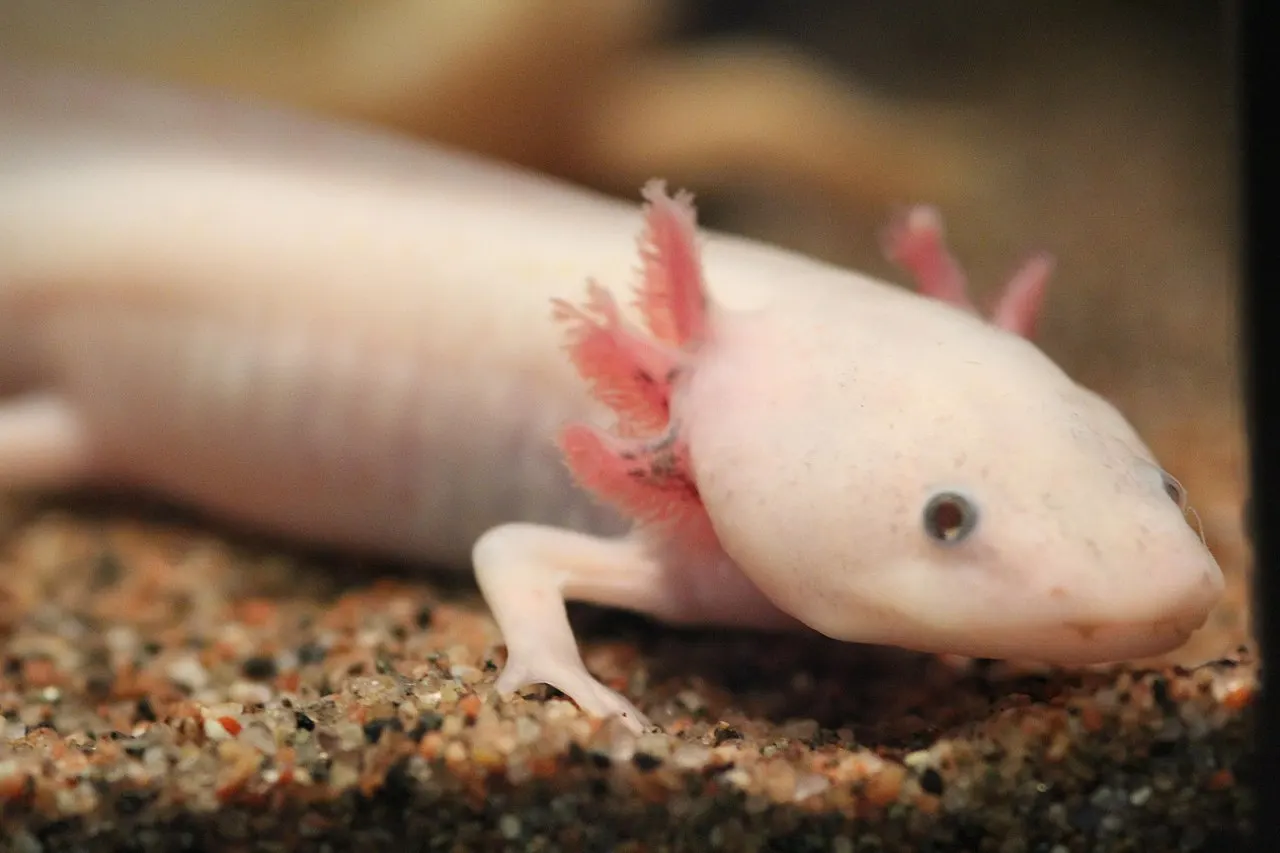
One of the main reasons why the Axolotl is a great choice for beginners is its relatively low maintenance requirements. They are relatively easy to care for and do not require a large enclosure. A 20-gallon tank is usually sufficient for a single Axolotl, although larger tanks are recommended if you plan on keeping multiple individuals. It is important to provide them with a suitable substrate, such as sand or gravel, and plenty of hiding spots like rocks or plants.
Axolotls are primarily aquatic creatures, so a fully aquatic setup is necessary. They require clean, filtered water to thrive, and the water temperature should be kept between 60-68 degrees Fahrenheit. It is important to monitor the water quality regularly and perform regular water changes to maintain optimal conditions for your Axolotl.
Feeding an Axolotl is relatively easy as well. They are carnivorous and primarily eat live or frozen foods such as bloodworms, brine shrimp, and small fish. It is important to provide a varied diet to ensure they receive all the necessary nutrients. Axolotls should be fed every 1-2 days, and any uneaten food should be removed from the tank to prevent water contamination.
One of the most fascinating aspects of the Axolotl is its ability to regenerate body parts. If an Axolotl loses a limb or sustains an injury, it has the remarkable ability to regrow the lost body part. This regenerative ability makes them a popular choice for scientific research and has also contributed to their popularity as pets.
| Fact | Description |
|---|---|
| Name | Axolotl |
| Scientific Name | Ambystoma mexicanum |
| Native Habitat | Found exclusively in Lake Xochimilco and Lake Chalco in Mexico |
| Unique Characteristics | – Axolotls exhibit neoteny, retaining their larval features throughout their entire life – They have the remarkable ability to regenerate lost body parts, including limbs, organs, and spinal cord |
| Aquatic Ambassadors | Axolotls are critically endangered in the wild but are popular and widely bred as captive pets |
| Feeding Behavior | They are carnivorous and primarily feed on small aquatic invertebrates such as worms and insects |
| Color Variations | Axolotls display a wide range of colors, including wild-type (brownish), leucistic (white), and various morphs |
| Importance in Research | They are studied for their regenerative abilities and potential insights into human tissue regeneration |
The Axolotl is an excellent choice for beginners looking to own a pet amphibian. With their unique appearance, low maintenance requirements, and regenerative abilities, they are sure to provide endless fascination and enjoyment. However, it is important to do thorough research and ensure you are prepared to meet their specific care needs before bringing an Axolotl into your home.
Conclusion:
In conclusion, if you are a beginner looking to venture into the world of pet amphibians, there are several options that are considered beginner-friendly and relatively easy to care for.
Here are the summarized bullet points for each amphibian:
- African Clawed Frogs:
- Peaceful nature and low maintenance make them ideal for beginners.
- Relatively large, but still easy to handle and care for.
- Fully aquatic with a simple diet, thriving in a basic aquatic setup.
- Fire-Bellied Toads:
- Small size and vibrant colors on their bellies make them visually appealing.
- Relatively easy to care for and can be kept in a simple setup.
- Ability to secrete toxins when threatened adds to their interesting behavior.
- Red-Eyed Tree Frogs:
- Captivating amphibians with vibrant colors and unique behaviors.
- Require a suitable arboreal habitat with vertical space, foliage, and moderate humidity.
- Thrive with a diet of live insects and proper care.
- White’s Tree Frogs:
- Larger amphibians with a charming appearance and calm demeanor.
- Relatively easy to care for and require a spacious terrarium with proper humidity and temperature levels.
- Known for their loud and distinctive calls.
- Axolotl:
- Unique fully aquatic amphibians with external gills and fringed gills.
- Require a larger aquarium with clean water and proper filtration.
- Fascinating regenerative abilities, being able to regrow lost limbs.
Whether you prefer a terrestrial or aquatic amphibian, there is a suitable companion for everyone. Remember to research and understand the specific care requirements of each species before bringing them home to ensure a happy and healthy life for your new pet.
Frequently Asked Questions about Pet Amphibians
Most pet amphibians have carnivorous diets and primarily feed on live insects, worms, and small invertebrates. Some larger species, like axolotls, may also consume small fish.
Feeding frequency can vary depending on the species and their size. In general, most amphibians should be fed 2-3 times per week, but it’s important to research the specific dietary requirements of your particular species.
Some amphibians, particularly those that have a terrestrial or semi-aquatic lifestyle, may require specialized lighting to provide them with the proper spectrum of light and heat. This can include UVB lighting for species that require it.
Creating the right habitat involves providing the appropriate temperature, humidity, and lighting conditions, as well as suitable substrate, hiding spots, and water sources. Researching the specific needs of your amphibian species is crucial to create a suitable environment.
While some amphibians tolerate handling, many are delicate and easily stressed by frequent handling. It’s important to research the handling preferences of your specific species and handle them only when necessary and with gentle care.
The lifespan of pet amphibians varies depending on the species. Some may live for a few years, while others can live for well over a decade with proper care. Researching the average lifespan of your specific species will give you a better idea of what to expect.
Regular water testing and appropriate filtration systems are essential for maintaining water quality. Monitoring ammonia, nitrite, nitrate levels, and conducting partial water changes as needed will help ensure a healthy environment for your aquatic amphibians.
Additional Resources for Beginner Amphibian Owners
1. Books: There are several books available that provide comprehensive information on amphibian care, including species-specific care guides and general husbandry tips. Some popular titles include “The New Encyclopedia of Reptiles and Amphibians” by Tim Halliday, “Florida’s Frogs, Toads, and Other Amphibians: A Guide to Their Identification and Habits” by Richard D. Bartlett and Patricia Bartlett, and “Keeping and Breeding Amphibians: Caccilians, Newts, Salamanders, Frogs and Toads” by Chris Mattison.
2. Online Forums and Communities: Joining online forums and communities dedicated to amphibian care can be a great way to connect with experienced amphibian owners and enthusiasts. Websites like Caudata.org and Reptile Forums have active communities where you can ask questions, share experiences, and learn from others.
3. Herpetological Societies and Associations: Local herpetological societies and associations often organize meetings, educational events, and have online resources for amphibian enthusiasts. These organizations can provide valuable information and connect you with experienced keepers in your area. Examples include the Association of Reptilian and Amphibian Veterinarians (ARAV) and the North American Amphibian Monitoring Program (NAAMP).
4. Reputable Websites and Care Sheets: Various reputable websites offer care sheets and articles specifically tailored to beginner amphibian owners. Some reliable sources include websites of herpetological societies, educational institutions, and established amphibian breeders. Examples include the National Amphibian Conservation Center (Detroit Zoo), Reptiles Magazine, and Amphibian Care.
5. Veterinarians specializing in Herpetology: Establishing a relationship with a reptile and amphibian-savvy veterinarian is crucial for the health and well-being of your amphibian. They can provide guidance on proper care, health checks, and address any concerns or issues that may arise.
6. Social Media Groups: Facebook groups and Instagram accounts dedicated to amphibian care and communities can provide a platform for sharing experiences, asking questions, and learning from other amphibian enthusiasts. Some popular groups include “Amphibian Owners and Keepers” and “Frog Lovers Worldwide” on Facebook.
By utilizing these additional resources, beginning amphibian enthusiasts can enhance their understanding and ensure they are providing optimal care for their new pet.
Remember, conducting thorough research and gaining a comprehensive understanding of your chosen amphibian species are essential in creating a happy and healthy environment for your new amphibious companion.


